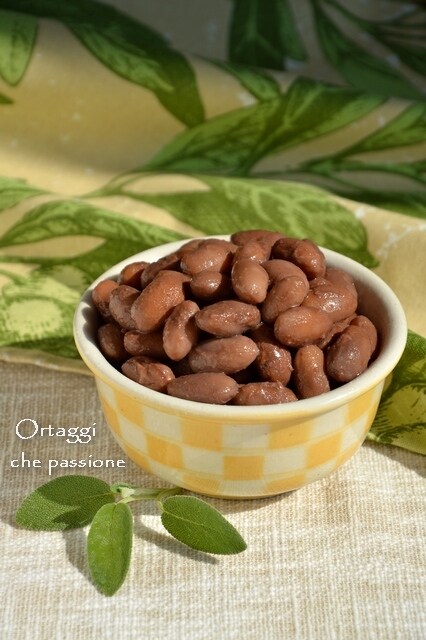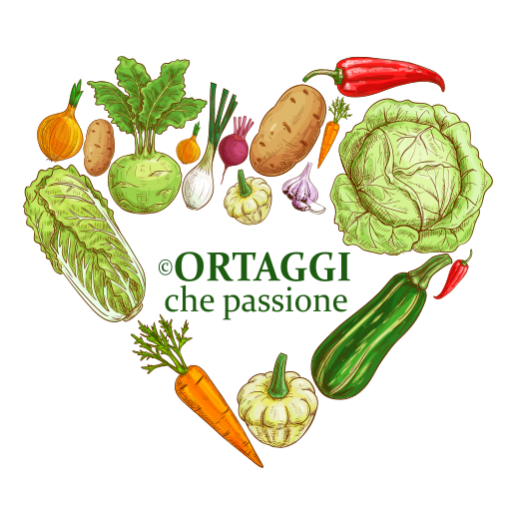Dried beans are economical and, once cooked in stew, they keep for several days. High-quality beans are found almost exclusively dried and keep well for over a year, but it’s better to consume them within two years.
Beans require a long soak and slow cooking without salt.
“Many among us have lost awareness of what a legume is and how it looks (only lentils with zampone on New Year’s Eve remain), they stay away from them because they bloat the belly (lacking intestinal microbes capable of digesting them), just as they stay away from whole foods and more fibrous vegetables (not tolerated due to gastritis, colitis, diverticulitis…), while whole grains and legumes, properly cooked and chewed, reduce inflammation, are the ideal food for microbes that keep the intestines and immune system healthy. The inclusion of these new foods, actually very old, should be gradual, perhaps starting with legume creams and whole grains, so as not to overwhelm an abused dysbiotic intestine. But it works! In a few months, the belly shrinks, glucose levels, cholesterol, triglycerides, and indices of insulin resistance and inflammation decrease.”
“The Gratitude Food” by Dr. Franco Berrino
Do you know the 5 healthiest legumes in the world? Read here.
SEASONALITY of #driedbeans – available all year round, in autumn the legumes of the new season are dried.
#savory – harvested fresh from spring to autumn
RECIPE with dried beans

- Difficulty: Easy
- Cost: Economical
- Rest time: 12 Hours
- Preparation time: 5 Minutes
- Portions: 4
- Cooking methods: Stovetop
- Cuisine: Healthy
- Seasonality: All seasons
- Energy 89.31 (Kcal)
- Carbohydrates 16.29 (g) of which sugars 0.22 (g)
- Proteins 6.15 (g)
- Fat 0.27 (g) of which saturated 0.07 (g)of which unsaturated 0.14 (g)
- Fibers 4.09 (g)
- Sodium 155.91 (mg)
Indicative values for a portion of 150 g processed in an automated way starting from the nutritional information available on the CREA* and FoodData Central** databases. It is not food and / or nutritional advice.
* CREATES Food and Nutrition Research Center: https://www.crea.gov.it/alimenti-e-nutrizione https://www.alimentinutrizione.it ** U.S. Department of Agriculture, Agricultural Research Service. FoodData Central, 2019. https://fdc.nal.usda.gov
How to cook dried beans
RECOMMENDED DOSE per person:
– 50 – 60 g as a side dish
– 30 g in soups
- 8.8 oz dried beans
- 1 clove garlic
- 2 leaves bay leaves (or other aroma to taste: kombu seaweed, bay leaf, anise, cumin, oregano, rosemary – should fix proteins -, sage, savory, celery, fennel seeds, ginger)
- as needed water
Tools
- Pan with two handles (steel or earthenware)
How to cook dried beans
SOAKING BEANS
Wash the dried legumes under running water to remove any impurities. Soak them in cold water overnight or longer. It is useful but not necessary to place them in the refrigerator and change the soaking water several times to prevent fermentation (the bubbles that form on the surface).
Do not add anything to the soaking water: salt would make them harder, baking soda hardens them and decreases their nutritional properties. Soaking also removes any antifungal agents used by the industry.
During soaking, legumes expel phytic acid, which, if not removed, tends to limit the absorption of their minerals and hinder the digestion of oligosaccharides.
The next day drain and wash them under running water.
Always ready SOAKED BEANS
After soaking the dried legumes, drain them and store them in the freezer in freezer bags. When needed, rinse them and place them in the pot still frozen, cooking them as usual.
HOW TO COOK DRIED BEANS
Place them in a bulging steel saucepan with handles and a thick bottom, possibly on a flame diffuser so that the boil, once reached, is barely noticeable. An earthenware pot that maintains a uniform temperature is excellent.
Cover with cold water and add the preferred aroma (a few dried bay leaves or two inches of kombu seaweed). Spices have an antiflatulent action.
DO NOT salt, otherwise the skins harden and break.
Bring slowly to a boil and continue cooking over low heat, with the pot half-covered. To prevent the skins from hardening, do not interrupt the gentle boil and, if necessary, add very hot water.
If many white bubbles form on the surface at the start of cooking, I recommend skimming. Alternatively, you can add a tablespoon of oil (peanut or extra virgin olive oil) to the cooking water to limit foam formation.
To avoid breaking them, do not use ladles, but stir them by shaking the pot or rotating the pan in a circular motion, holding it by the handles.
Cook them to readiness and, once ready, turn off the heat and develop the flavor by letting them cool in their water. It is always better not to drain the legumes from the cooking water (which contains most of the nutrients and their good flavor).
If necessary, remove some of the water and use it for other preparations (soups, risottos, soups…).
Then let the beans dry in an uncovered pot over a higher heat (better the next day), salt only at the end of cooking.
Serve the cooked beans, hot and seasoned with raw extra virgin olive oil and, if desired, chopped dried rosemary.
IMPORTANT: legumes should be allowed to warm up in their cooking water, if completely drained and left in the air they dry out and their skins break.
COOKING TIMES
Dried beans generally cook in a little over an hour or even three. It all depends on the soaking time (the longer they have been soaked, the less time they will spend in the pot) and their age (the older they are, the more time they will take to cook).
Well-cooked beans retain their shape, the skin is not wrinkled and they are not split.
For COOKING in a pressure cooker, read here (keep in mind that it is not suitable for all types of legumes as its speed tends to break beans), excellent for creams or velvets.
Sara’s tips
To soften the skin:
– “grandma’s remedy” add a small pinch of baking soda during cooking (maximum 3 g per kg of beans),
– “for macrobiotics” add a piece of kombu seaweed.
Legumes are done when they are tender and easily mashed. If well-cooked, beans are much more digestible.
The broth obtained at the end of cooking (rich in nutrients), if abundant, can be used in the preparation of soups, purees, risottos…
When legumes
are cooked in an acidic liquid (like tomato sauce, vinegar, lemon…), their outer part tends to remain hard. However, some say that to make them more digestible, it’s necessary to add a tablespoon of white vinegar for every kilo of legumes to the soaking water. Certainly, I recommend adding the tomato only at the end of cooking, this way the already cooked beans will maintain their shape and will be flavored.
If at the end of cooking
the water is nice and thick, I recommend keeping it to add creaminess to the bean seasoning.
I usually prepare them the day before and the following day I slowly reheat them in their little cooking water (only if necessary adding more), so they become even better and creamier.
Advice to cook legumes in quantity then, in part, freeze them in the freezer in portions in their cooking liquid (aquafaba). They will be perfect and ready immediately.
TIPS for BUYING dried beans
The legumes must be whole, uniform, and a bright color.
It’s better to buy dried beans at the end of autumn and make sure they are those harvested and dried in the current year.
How to STORE dried beans
Store dried legumes in a cool and well-ventilated place, in paper bags, and at a temperature below 59 degrees Fahrenheit. Freezer storage (freezing) is excellent.
For better storage, as soon as you buy the dried beans, place them in the freezer for a week, this will eliminate the problem of pests.
STORE cooked beans
1. Jar the cooked beans while still boiling and covered with their cooking water (aquafaba) in sterilized jars, close immediately and place among blankets to create a vacuum.
Cooked beans vacuum-sealed in sterilized jars can keep for several months or even years. It is important to ensure that the jars are correctly sterilized and that the vacuum process is successful to prevent bacterial contamination. Storing the jars in a cool, dark, and dry place will extend preservation duration. However, it is always advisable to visually check the food before consuming it and discard it if it shows signs of spoilage.
NOTE: if the cooked beans have been stored properly and then reheated to adequate temperatures before consumption, the cooking process should eliminate any present bacteria. However, it is important to reheat the beans to a sufficiently high temperature (they must reach an internal temperature of at least 167°F) to destroy any contaminants.
2. Store cooked beans with their cooking water in glass containers in the freezer. When needed, defrost in the refrigerator and always reheat in their water.
Cooked beans stored in the freezer can maintain their quality for a fairly long period. Under optimal conditions, they can keep for about 6-12 months. It is important to freeze the beans in airtight containers or food bags specifically designed for freezer storage, to prevent freezer burn and absorption of unwanted odors.
NUTRITIONAL VALUES AND STORAGE
Storing cooked beans may result in a minimal loss of nutritional values, especially if frozen, but their protein, fiber, and other nutrient content generally remains substantially intact. The loss may be more significant if the beans are stored at room temperature for long periods.
Bean RECIPES
There are more than 500 varieties of beans, click on each type to discover the recipe.
Some varieties are particularly flavorful and prized, others have practically disappeared from the market or are little known. The most used types of beans are: Red Azuki, Spanish White, Borlotti, Canela, Cannellini, Coco, Corona, Black-eyed beans, Egyptian bean (Lablab), Controne beans, Lamòn, Levada beans, Lima beans, Rotonda beans, Sarconi beans, Pigna beans, Gialet, Red Maseleta, Mung (green soy), Black beans, Black-eyed peas, Risina of Spello, Red beans, Tondini, Toscanini, Verdon, Zolfini…

